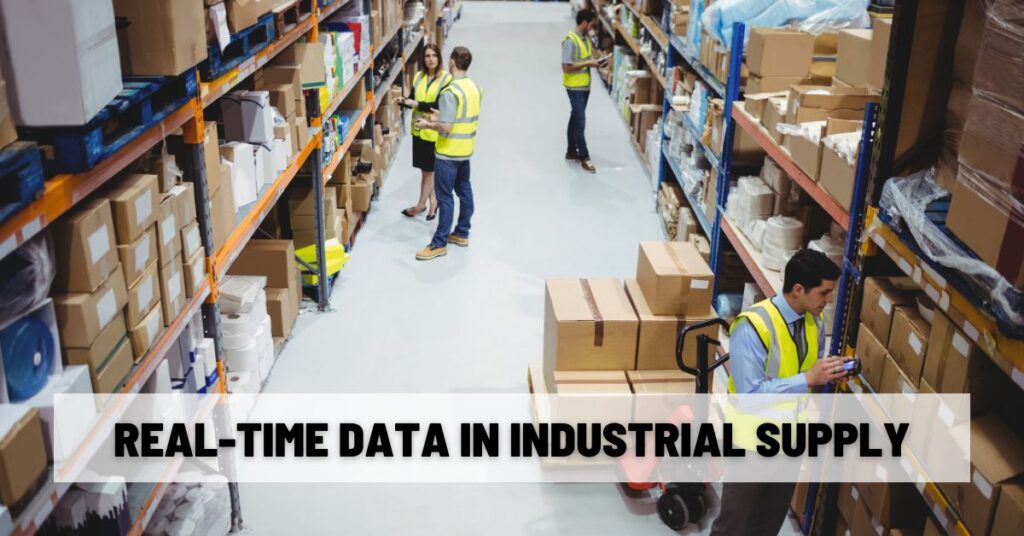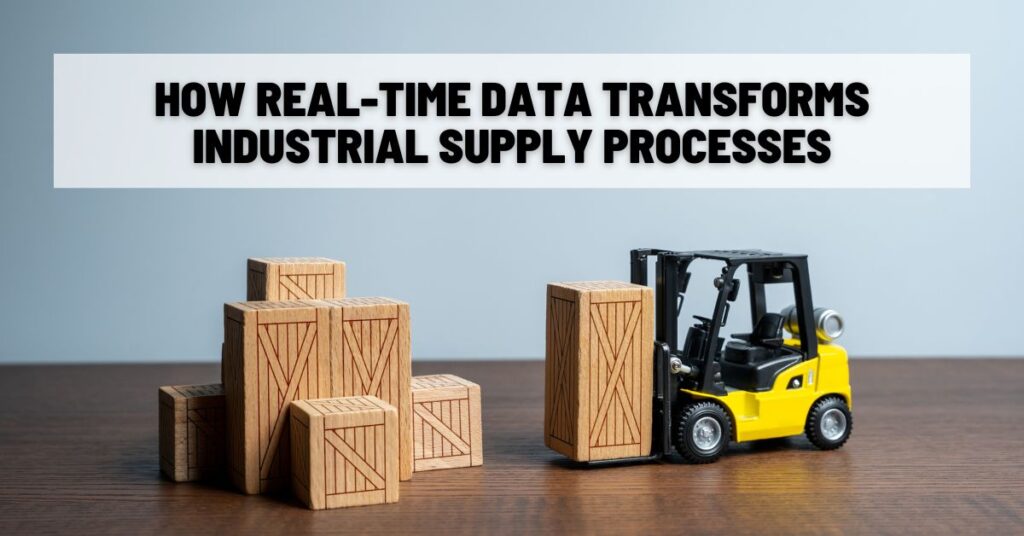Real-time Data in Industrial Supply

How to Transform Your Business Operations Today
Your inventory is the heartbeat of your business. But if the data behind it is outdated, even by a little, that heartbeat gets irregular fast. The consequences? Stockouts, inefficiencies, lost sales, and frustrated customers.
Fundamentally, your decisions are only as good as the data you base them on. And in today’s fast-paced supply chain, the key to staying ahead of the competition is real-time data. Let’s explore what that really means, why it’s so crucial, and how it can solve the daily challenges that weigh you down.

How Real-Time Data Transforms Industrial Supply Processes
1. Enhanced Inventory Management
If your stock data is even a day late, you’re making decisions based on old information. With real-time data, you know exactly what’s in stock right now—not what was in stock yesterday. This helps you avoid costly situations like overstocking or stockouts.
When you can see live inventory levels, you can confidently respond to demand, place accurate orders, and adjust on the fly. Let’s say a shipment gets delayed. Real-time data lets you know exactly how much safety stock remains, giving you the chance to adjust before you run into a critical shortfall.
2. Improved Supply Chain Visibility
Real-time data means seeing your entire supply chain in motion. When a supplier delays a shipment or a customer places a last-minute rush order, you know about it immediately. This visibility lets you pivot and adapt without losing a beat.
For instance, if a key part goes out of stock, real-time data helps you find alternative suppliers or decide how to reroute existing resources—before it becomes an emergency. Supply chain disruptions happen, but how you handle them can make or break customer satisfaction.
3. Better Decision-Making
Making informed decisions quickly is at the heart of any successful business. Real-time data empowers you to make those decisions with confidence. Instead of guessing or making choices based on outdated spreadsheets, you get an accurate snapshot of your current inventory, orders, and operations.
Maybe your sales team is promising customers next-day delivery without realizing that certain SKUs are actually running low. With real-time data, everyone—from the warehouse manager to the sales rep—operates on the same page, leading to fewer surprises and more informed choices.
4. Enhanced Customer Satisfaction
One of the biggest benefits of real-time data is its impact on customer satisfaction. Customers want to know when they’ll get their order, whether it’s in stock, and if they can count on you to deliver on time. Real-time data makes those answers available instantly.
When your sales or support team can access real-time inventory information, they can provide clear and accurate responses to customers without hesitation. “Yes, we have that in stock, and it can ship today.” There’s no overstating the difference in customer experience when your team has instant access to all the details that matter.
What is Real-Time Data?
“Real-time data” might sound a bit like corporate jargon, but it’s really simple. Real-time data is information that’s updated immediately as changes happen—with delays measured in seconds or milliseconds.
Unlike old-fashioned batch processing (where data updates happen in chunks at the end of the day), real-time data is always up-to-date.
For industrial supply companies, real-time data means you always know what’s in stock, what’s being shipped, and when your next shipment is arriving. It’s like having your finger on the pulse of every moving part of your business, from the warehouse shelves to your suppliers’ trucks.

How Real-Time Data Transforms Industrial Supply Processes
1. Inventory Control that Works for You
As the age-old just-in-time wisdom tells us, inventory is like Goldilocks—you don’t want too much or too little, just the right amount. Real-time data helps you strike that perfect balance by showing you what’s available at any moment. This minimizes excess stock that ties up cash and prevents shortages that could lead to missed sales.
2. Supplier Coordination
Suppliers are more likely to be allies if they know what’s coming down the road. With real-time inventory visibility, you can share accurate forecasts with your suppliers so they can prepare for your needs before you even make the call. It creates a relationship where your needs don’t feel like a surprise to anyone.
3. Streamlined Order Fulfillment
Whether you’re pulling inventory for an order or shipping to a customer, real-time data ensures that the process runs smoothly. Real-time inventory information means your pickers grab the right items every time. Your fulfillment team works efficiently, and customers receive exactly what they ordered—on time, without mix-ups.
How to Get Started with Real-Time Data Integration
To leverage real-time data effectively, it all comes down to having the right systems in place. Most companies find that implementing an ERP (Enterprise Resource Planning) solution is the most straightforward way to achieve this. An ERP acts as a central hub that integrates data from different areas of your business, ensuring that everything is always up-to-date.
AcctVantage ERP acts as a single source of truth for all your inventory, sales, and accounting data, all in real-time. The minute your client’s purchase is delivered, you’ll know it. The minute you come within risk of selling out of a SKU, you’ll know it. With AcctVantage ERP, you’ll know, the minute it happens.
For more information on how to get started with accessing data in real-time, contact us today.


